DIAGNOSING AND ELIMINATING WIND NOISES
"It makes a kind of woosh noise" or "I've heard a whistling or howling noise like someone blowing into a soda bottle sometimes in the morning on my way to work!"
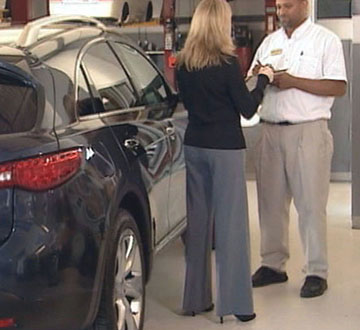
Most technicians are not thrilled when assigned an R.O. with a customer complaint involving wind noise. But a little knowledge and a systematic diagnostic process can help you become an expert in tracking down and eliminating the causes of wind noise complaints.
WHAT IS SOUND?
Unlike vibrations that we detect through touch, sound is a vibration we detect through hearing. Sound is the product of air pressure changes; it can travel through materials and has three principal characteristics: loudness, pitch and tone.
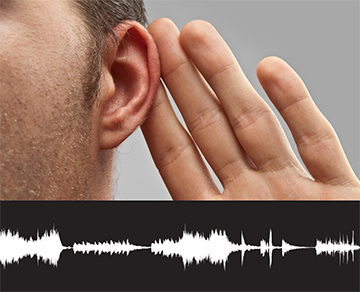
- Loudness is determined by the sound pressure felt by the ear. The higher the sound pressure, or the larger the amplitude, the louder the noise will sound.
- Pitch is a term used to describe the frequency of sound waves as they pass a given point and are detected by the ear. The shorter the wavelength, the higher the frequency and the higher the pitch we hear.
- Tone is determined by wave form. For example, due to differing waveforms, the note produced by a piano will sound differently than the same note played by a violin.
WHEN SOUND IS NOISE
"Sound" and "noise" both refer to vibrations caused by air pressure changes, but noise has the distinction of being an unpleasant sound. For example, most of us consider the sound of a well-tuned exhaust system to be pleasant sound, but the raspy, irritating sound caused by a rusted-out muffler is "noise."
TYPES OF WIND NOISES
Wind noise and turbulence are normal results of air flowing around and against the vehicle's body while driving. There are a variety of conditions that can create unusual wind noises, but it is generally only when they become excessive that they can become annoying to customers.
AIR LEAKING IN OR OUT OF THE CABIN
Noises caused by air leaking into the cabin will often create a constant pitch, and are usually the result of damaged window seals or loose or broken body panel parts. These causes are relatively easy to identify and repair because there is physical evidence of the problem.
- At driving speeds or when the wind is gusting, higher air pressure outside the vehicle tries to rush in through gaps.
- When the vehicle's windows are closed and the vents are OPEN or when the A/C system is ON, the cabin becomes pressurized.

WHEN THE CABIN BECOMES PRESSURIZED
The air inside will find any available gap or opening to escape to the lower pressure outside
the vehicle, causing a noise.
Most air leaks can be located by visual inspection and then repaired.
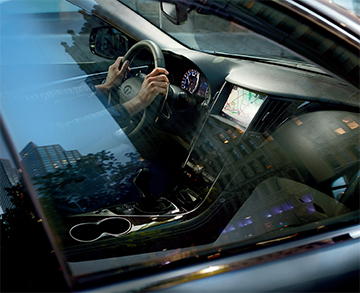
NOISE CAUSED BY TURBULENCE
Turbulent noise can sometimes be more difficult to isolate because the noise originates outside the vehicle. Diagnosing a turbulent noise can be challenging because isolating the cause may involve recreating the driving speed plus the road or weather conditions that occur when the noise is detected by your customer.
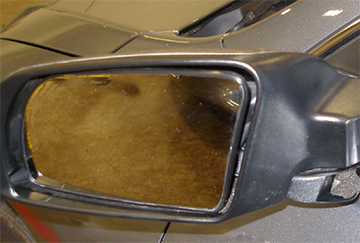
Air flowing against and around the vehicle can be deflected by components protruding from the vehicle.
Misaligned body panels or door gaps, mirrors, sunroofs, windshield wipers, racks, loose pieces of molding, or protruding edges can create body turbulance or whistling wind noises.
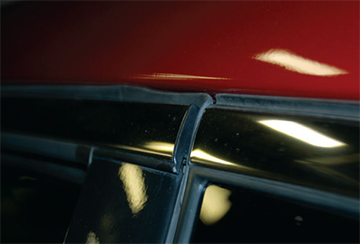
Turbulent noises might also seem to be occuring at a specific location but may acutally be coming from another place. Do not limit your inspection to only one or more of the most obvious locations.
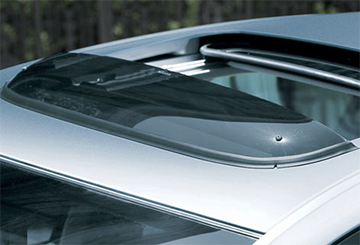
Look for any aftermarket parts such as grille screens, headlamp protectors, wind deflectors, splash guards, antennas, or other equipment not origionally designed for the vehicle. These aftermarket parts often have fit issues that can deflect the air and create wind noise.
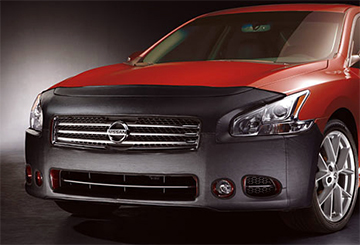
Note: The noise may often sound to the customer like it is inside the vehicle when it is actually being transferred through vibration from outside the vehicle.
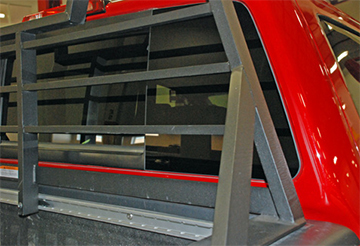
REED TYPE NOISE
A "reed" type noise is a buzzing noise like blowing over a reed in a woodwind instrument. It may be caused by debris getting caught between the windshield trim and windshield glass; or leaves caught and slapping the vehicle surface; or loose plastic under cover panels.
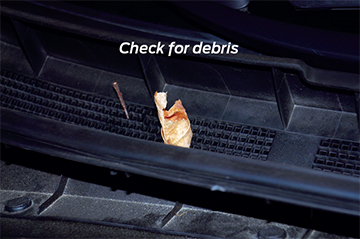
NOISES THAT OCCUR IN A CROSS WIND
Noises that only occur in a crosswind are often gaps on the opposite side of the vehicle from the direction of the crosswind. For example; if wind is from left to right, it may create low pressure on the right side of the vehicle, pulling the door out slightly, away from the body, creating a gap or leak in the door seal. This would likely only occur if the door is already adjusted too far out from the body.
LOUD RUSH NOISES
Loud rush noises can be caused by doors that are not flush. The best case is for door panels to be exactly flush with adjacent panels. If a panel is over-flush (sticking up or out) in the front, wind can catch the edge and create a noise. If a door panel is not exactly flush, then the next best condition is under-flush (in a little) in front and over-flush (out a little) in the rear so the wind cannot catch an edge as it moves from the front of the vehicle to the rear. The same condition applies to the sunroof, under-flush in front and over-flush in the rear is OK, but not the opposite.
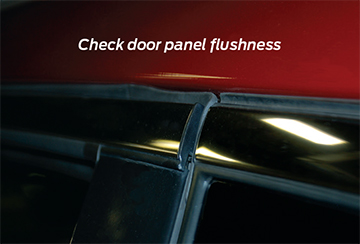
ISOLATING AND ELIMINATING SOURCES OF WIND NOISE
The larger challenge is often isolating the cause of a wind noise; once the cause is identified, eliminating it is usually an obvious repair.
THE TAPING TECHNIQUE
Try selectively taping along body seams or molding areas that you suspect, then drive the vehicle again to see if the noise is gone or changes in any way.
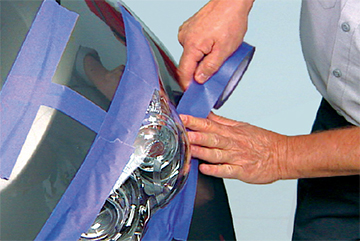
CHECK WITH SHOP AIR
Using shop air can help you simulate wind with the vehicle stationary in the shop.
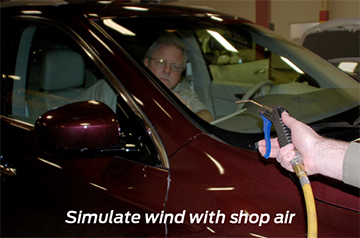
BEWARE OF "MASKING"
Multiple sounds often occur simultaneously while driving. When this happens, a particular sound can be hidden by others. For example, a customer may normally
keep a window slightly cracked. If the window is closed one day, the customer might hear a wind noise that has been there all the time but was “masked” by the normal noise caused by the open window.
When diagnosing a noise complaint, be sure to duplicate the conditions under which the customer reports hearing the noise. Otherwise, the noise the customer is reporting may be masked by other noises.
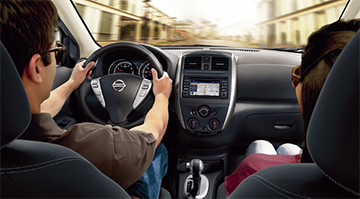
IT IS ALL ABOUT PROCESS
CONFIRM
- When a customer reports a wind noise, use the Squeak & Rattle Diagnostic Worksheet to document details about the noise and the conditions under which the customer hears it.
- If possible, take a test drive with the customer to help confirm the noise and identify possible sources.
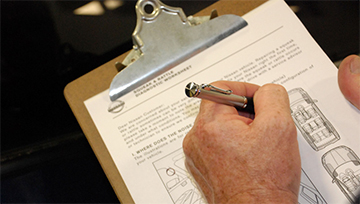
IDENTIFY
- Ask your customer to point to the location of the noise while you do the same.
- You can use an electronic stethoscope to isolate the location of a wind noise or air leak.
- Check ASIST for any wind noise TSBs that may be applicable to the vehicle.
Note: Your ears can be fooled so try turning your head to help triangulate the location of the wind noise or air leak.
REPAIR
The J-50397 Squeak and Rattle Kit provides various items such as foam tape and patches that can be used to eliminate wind noise once you have identified the source.
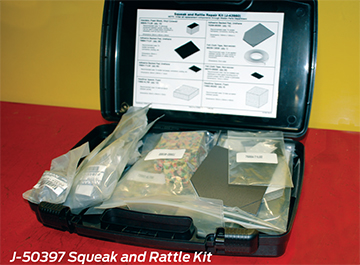
THE BEST APPROACH IS TO FOLLOW THIS FOUR-STEP DIAGNOSIS AND REPAIR PROCESS:
Verify the Symptom
- Record a clear, concise description of the customer’s complaint noise on the Squeak & Rattle Diagnostic Worksheet.
- Perform a road test to confirm the existence and nature of the noise.
- Identify normal and abnormal noises.
- Identify exact circumstances and driving conditions.
Isolate the Probable Cause
- Perform a thorough check of the vehicle to determine the source of the problem.
- Determine if the noise is caused by a loose or damaged part or weather stripping.
- Don't overlook checking for body panel gaps in the front of the vehicle, or gaps at the base of an outside mirror which might be caused by a missing gasket or incorrect installation.
- Noise coming from an outside mirror area may be air leaking past an electrical harness seal, and will usually be obvious when the interior mirror trim is removed.
Complete the Repair
- Insulate the noise source, cover or fill the gap or air leakage location.
- Replace or repair the incident part(s).
Recheck the Repair
- Conduct a second road test.
- Confirm the repair.
- Make sure no new noises are apparent.

In order to maintain or improve your repair success rate, we recommend that you adopt and stick to this strategy whenever you diagnose a wind noise complaint.